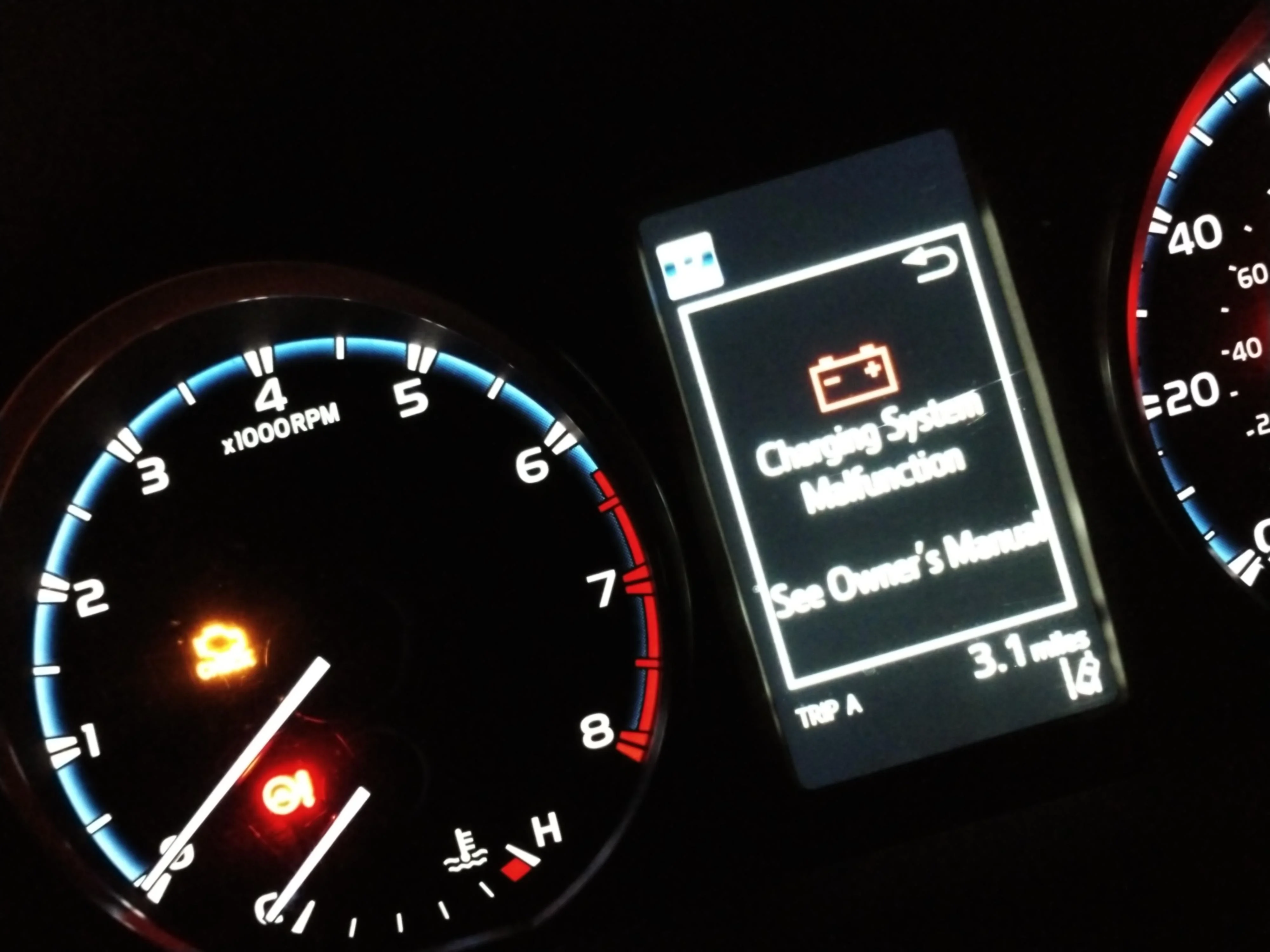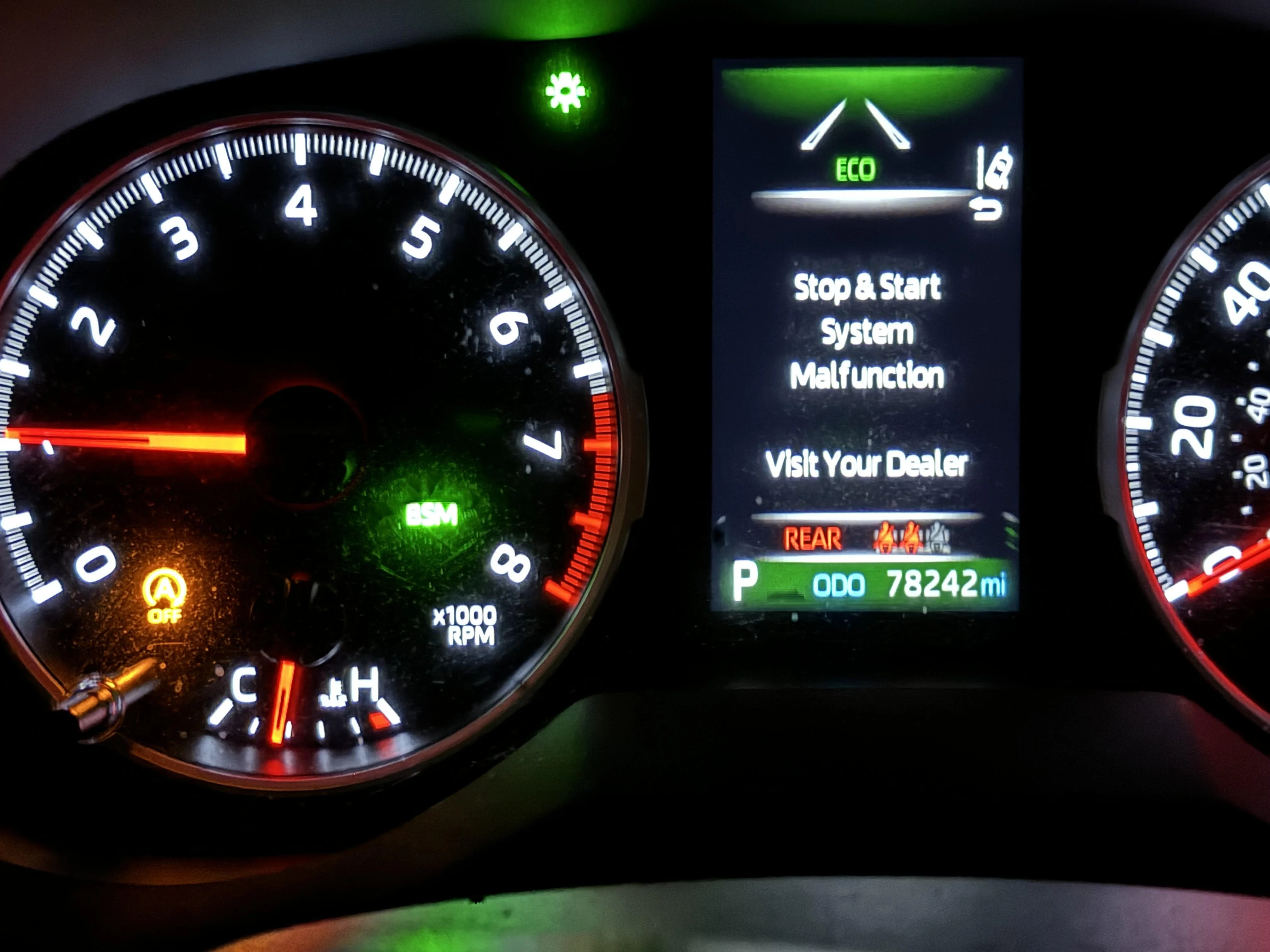


The charging system is a critical component in your Toyota RAV4, responsible for supplying power to the electrical components and keeping the battery charged. When the "Charging System Malfunction" warning illuminates, it indicates an issue that requires prompt attention to prevent further complications.

A well-functioning charging system ensures that your vehicle's electrical components operate correctly. The alternator, battery, voltage regulator, and associated components work together to maintain a steady supply of electrical power. Ignoring the "Charging System Malfunction" warning can lead to a drained battery, electrical component failures, and potentially leave you stranded.
Several factors can contribute to a charging system malfunction in your Toyota RAV4. Understanding these causes is crucial for accurate diagnosis and effective repair.
| Potential Cause | Description |
|---|---|
| Faulty Alternator | The alternator generates electrical power to charge the battery and supply the vehicle's electrical components. A failing alternator may not produce enough voltage, leading to the warning light. |
| Battery Cable Issues | Loose or corroded battery cable connections can disrupt the flow of electricity, preventing the alternator from effectively charging the battery. |
| Worn Serpentine Belt | The serpentine belt drives the alternator and other accessories. A worn, cracked, or loose belt can cause the alternator to undercharge or not charge the battery at all. |
| Faulty Voltage Regulator | The voltage regulator controls the alternator's output voltage. A faulty regulator can cause overcharging or undercharging, leading to charging system malfunctions. |
| Electrical System Problems | Issues with wiring, ground connections, or faulty sensors can interfere with the charging system's operation and trigger the warning light. |
Identifying the root cause is essential for proper repair. The diagnostic process may involve the following steps:
Checking the battery condition and charge level
Inspecting battery cables and connections for corrosion, looseness, or damage
Examining the serpentine belt for wear, cracks, or proper tension
Testing the alternator's output voltage and current under load conditions
Investigating potential wiring issues, ground faults, or other electrical system problems
Once the root cause has been identified, the appropriate repair can be performed:
Replacing a faulty alternator, voltage regulator, or serpentine belt
Repairing or replacing corroded or damaged battery cables
Addressing wiring issues, ground faults, or other electrical system problems
| Repair | Description |
|---|---|
| Alternator Replacement | Involves removing the old alternator, installing a new or remanufactured unit, and ensuring proper belt tension and electrical connections. |
| Battery Cable Repair | Corroded or damaged cables should be replaced with new cables of the correct gauge and length, ensuring secure connections. |
| Serpentine Belt Replacement | Worn or damaged belts should be replaced according to the manufacturer's recommendations, with proper tension and alignment. |
| Voltage Regulator Replacement | Faulty voltage regulators must be replaced with a compatible unit to restore proper charging system operation. |
| Electrical System Repair | Addressing wiring issues, ground faults, or other electrical system problems that may be causing the charging system malfunction. |
The cost of repairing a charging system malfunction can vary depending on several factors:
Parts cost (alternator, voltage regulator, serpentine belt, etc.)
Labor cost for diagnosis and repair
Additional repairs required for damaged electrical components
It's essential to obtain a detailed estimate from a reputable repair shop or mechanic to understand the full scope of the repair and associated costs.
Regular maintenance can help prevent charging system malfunctions and extend the lifespan of the components:
Periodic battery inspections, including checking charge level, cleaning terminals, and ensuring proper cable connections
Regular serpentine belt inspections and replacement at recommended intervals
Alternator and voltage regulator testing to identify potential issues before failure
Electrical system maintenance, including checking wiring and ground connections
By following these preventive measures, you can minimize the risk of charging system malfunctions and ensure the reliable operation of your Toyota RAV4.
Addressing the "Charging System Malfunction" warning promptly is crucial to avoid further complications. By understanding the potential causes, diagnostic methods, repair procedures, and preventive maintenance strategies, you can take proactive steps to maintain a reliable charging system in your Toyota RAV4. If you encounter this warning, it's recommended to have a professional mechanic diagnose and repair the issue to prevent more significant problems down the line.
The potential causes include a faulty alternator, battery cable issues, worn serpentine belt, faulty voltage regulator, and electrical system problems such as wiring or ground connection issues.
The diagnostic process may involve checking the battery condition, inspecting cables and connections, examining the serpentine belt, testing the alternator's output, and investigating potential wiring or electrical system issues.
Common repair procedures include replacing a faulty alternator, voltage regulator, or serpentine belt, repairing or replacing corroded or damaged battery cables, and addressing wiring issues or other electrical system problems.
Regular maintenance, such as periodic battery inspections, serpentine belt replacements, alternator and voltage regulator testing, and electrical system maintenance, can help prevent charging system malfunctions and extend the lifespan of the components.
The cost of repair depends on factors such as the cost of replacement parts (alternator, voltage regulator, serpentine belt, etc.), labor costs for diagnosis and repair, and any additional repairs required for damaged electrical components.
Ignoring the warning can lead to a drained battery, electrical component failures, and potentially leave you stranded, so it's crucial to address the issue promptly to prevent further complications.
Yes, a faulty voltage regulator, which controls the alternator's output voltage, can cause overcharging or undercharging issues, leading to charging system malfunctions.
The serpentine belt drives the alternator and other accessories. A worn, cracked, or loose belt can cause the alternator to undercharge or not charge the battery at all, resulting in a charging system malfunction.
Loose or corroded battery cable connections can disrupt the flow of electricity, preventing the alternator from effectively charging the battery and causing a charging system malfunction.
Yes, issues with wiring, ground connections, or faulty sensors can interfere with the charging system's operation and trigger the "Charging System Malfunction" warning light.

Miguel started tinkering with car radios as a teenager, fascinated by the intricate dance of wires and circuits. This passion led him to pursue a career as an automotive electrician. For the past 10 years, Miguel has tackled everything from flickering headlights to mysterious electrical gremlins. He thrives on troubleshooting electrical problems and enjoys sharing his knowledge to empower car owners to understand their vehicles better.



